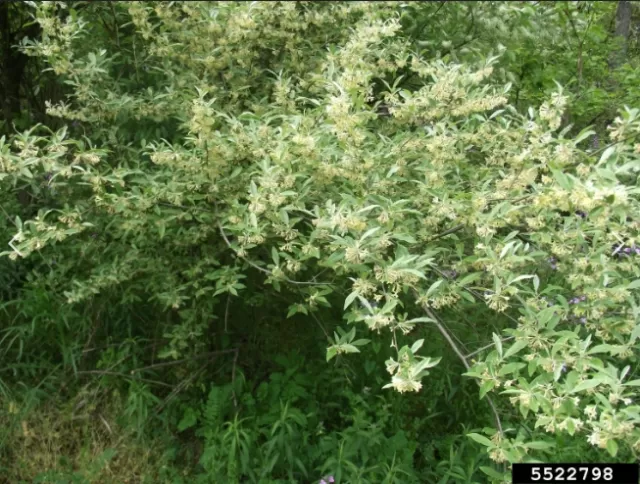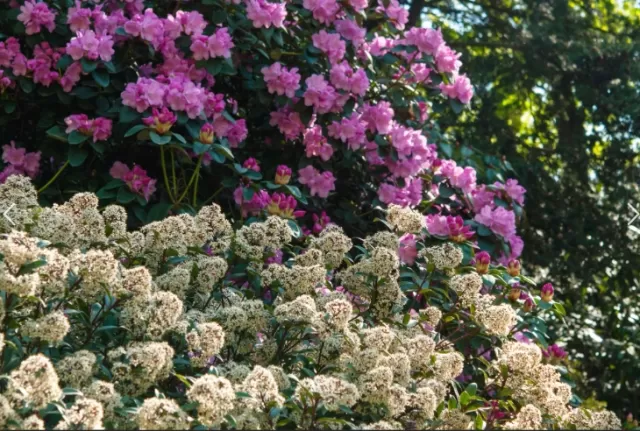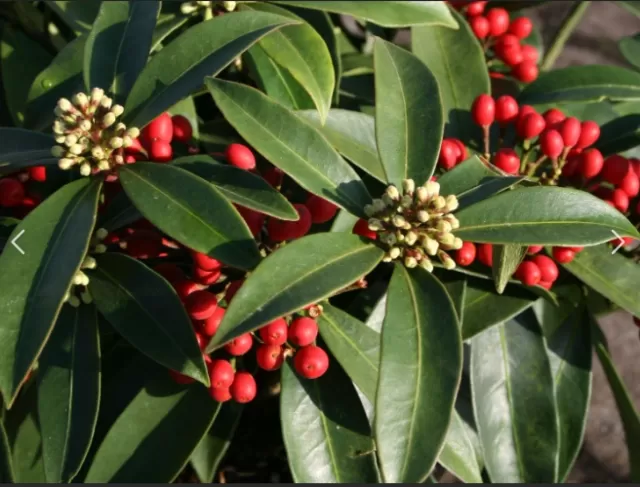Aromatic Evergreen Shrubs for an Incredibly Fragrant Garden. In the realm of garden aesthetics, few plants rival the versatility and endurance of evergreen shrubs. These horticultural marvels not only maintain their lush foliage throughout multiple seasons but also contribute to the landscape’s vibrancy with their stunning flowers. As they burgeon during the growing period, many evergreens gift the garden with a burst of color, turning the outdoor space into a year-round masterpiece.
Yet, the allure of these evergreens extends beyond the visual realm. Enter the fragrant evergreen shrubs, adding an olfactory symphony to the garden. Picture honey-scented breezes, wafts of citrus in the air, or the comforting aroma of spice and peaches. These aromatic companions not only make your garden visually appealing year-round but also transform it into a sensory haven.
From season to season, these evergreen shrubs unfurl their aromatic treasures, making each stroll through the garden a multi-sensory experience. The fragrant allure is not confined to a specific time; it lingers, creating an ambiance that transcends the boundaries of sight. In the grand tapestry of your garden, these fragrant evergreen shrubs emerge as not just plants but as storytellers, weaving tales of aroma and beauty that unfold throughout the year.
Robust Thorny Olive: A Resilient Evergreen Marvel

The hardy thorny olive, scientifically known as Elaeagnus pungens, stands as a robust and densely branched evergreen shrub, gracing landscapes with its presence.
Characterized by petite, bell-shaped flowers in creamy white hues, this resilient shrub bursts into bloom, forming delightful axillary clusters that captivate the senses from October through November. The fragrance emanating from the blooms resembles a sweet gardenia-scented perfume, creating an olfactory symphony in its surroundings.
Linda Langelo, a horticulture specialist at Colorado State University, sheds light on the impressive qualities of the hardy thorny olive.
Describing it as a vigorous shrub, she notes the importance of vigilant pruning to maintain its size, particularly when cultivated in more confined spaces. Langelo emphasizes that unless placed in an open area, this fast-growing marvel may require periodic pruning to keep its exuberance in check.
Additionally, she highlights its tendency to propagate through suckers, showcasing not only its resilience but also its propensity for spreading. In the realm of landscaping, the hardy thorny olive emerges as a dynamic and captivating choice, blending aesthetics with the need for thoughtful maintenance.
Aromatic Elegance: Fragrant Tea Olive Unveiled
Distinguished by its upright stature and adorned with glossy, oval-shaped green leaves throughout the year, the fragrant tea olive, scientifically known as Osmanthus fragrans, emerges as a captivating evergreen.
This botanical wonder graces the seasons with clusters of exquisite white flowers, unfurling their beauty predominantly during the spring while occasionally making a charming appearance in both summer and fall. Linda Langelo, a knowledgeable source on horticulture, accentuates the sensory allure of this plant, describing its blooms as emitting a rich, sweet fragrance reminiscent of honey and peaches, with hints of apricots for those with discerning noses.
In regions with warmer summer climates, Langelo offers a strategic tip, recommending thoughtful placement to ensure the fragrant tea olive receives a touch of afternoon shade.
This advice underlines the plant’s sensitivity to environmental conditions and showcases the importance of providing it with an ideal habitat for flourishing. The fragrant tea olive, with its aromatic prowess and visual splendor, stands as a testament to nature’s ability to enchant and captivate the senses in every season.
Elegance in Bloom: Japanese Skimmia Unveiled

The Japanese skimmia, scientifically recognized as Skimmia japonica, emerges as a botanical spectacle, gracing landscapes with its distinctive charm.
Sporting leathery leaves that endure throughout the seasons, this ornamental gem unfurls fragrant flowers in hues of white or pink, casting a delightful spell during the springtime. Seth Pearsoll, the creative director for The Pennsylvania Horticultural Society, sheds light on an additional allure of the female plants within this species—they bear vibrant red berries, adding a splash of color and further enhancing the visual appeal.
As a testament to nature’s artistry, the Japanese skimmia showcases its versatility, seamlessly blending ornamental foliage with the enchantment of fragrant blossoms.
Pearsoll’s insight into the development of red berries by female plants adds an extra layer of intrigue to this botanical wonder. With its evergreen presence, fragrant blooms, and vibrant berries, the Japanese skimmia stands as a testament to the beauty that unfolds in the natural world, bringing a touch of elegance to every spring landscape.
Enchanting Daphne: A Symphony of Fragrance in Reddish-Purple Blooms
Daphne, scientifically known as Daphne odora, presents a botanical spectacle with its striking reddish-purple flowers, each delicately imbued with a spicy-sweet fragrance, complemented by a lively hint of citrus.
This aromatic marvel captivates the senses, offering a sensory journey through its alluring blooms. Linda Langelo, a horticulture specialist, imparts a crucial piece of advice for those eager to embrace the beauty of daphne in their landscapes. She emphasizes the importance of thoughtful placement, suggesting that it be planted in a location where it is intended to flourish permanently. Langelo highlights the plant’s aversion to disturbance once it has taken root, cautioning that daphne is slow to establish itself.
In the realm of horticulture, daphne stands as a testament to the delicate balance between beauty and resilience.
Its reddish-purple blooms not only add a splash of color to the landscape but also contribute to an olfactory symphony, making it a captivating choice for those who seek to infuse their Outdoor Spaces with both visual and aromatic allure. The slow and steady establishment of daphne only adds to its mystique, inviting patience as a companion in the journey of cultivating this enchanting botanical gem.
Gardenia Splendor: Fragrant Blooms and Seasonal Care

The gardenia, a cherished evergreen shrub renowned for its Timeless Elegance, graces gardens with the unveiling of waxy white blossoms in the late spring or early summer, each emanating a captivating and spicy scent.
Identified by its botanical name, Gardenia jasminoides, this shrub has earned a special place in the hearts of garden enthusiasts. Linda Langelo, a horticulture specialist, provides valuable insights into nurturing this beloved plant.
For those fortunate enough to cultivate a gardenia shrub in their garden, Langelo recommends a strategic approach to care.
Fertilizing the plant in late June proves instrumental in encouraging a profusion of blossoms, ensuring that the gardenia lives up to its reputation for beauty and fragrance. However, a word of caution is offered: refrain from fertilizing the gardenia in the fall.
This guidance underscores the importance of timing in providing the right nutrients for optimal growth and blooming.
The gardenia, with its waxy blooms and spicy fragrance, becomes not just a visual centerpiece but also an aromatic haven in the garden landscape.
As seasons unfold, the careful cultivation and timely care of this evergreen beauty promise to yield a continuous display of nature’s splendor in the form of fragrant, white blossoms.
*The information is for reference only.